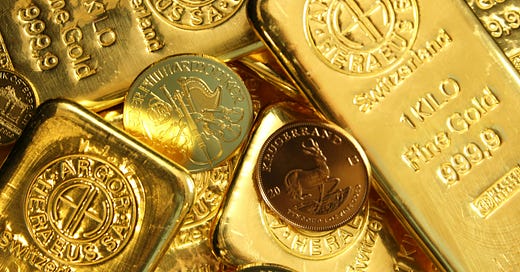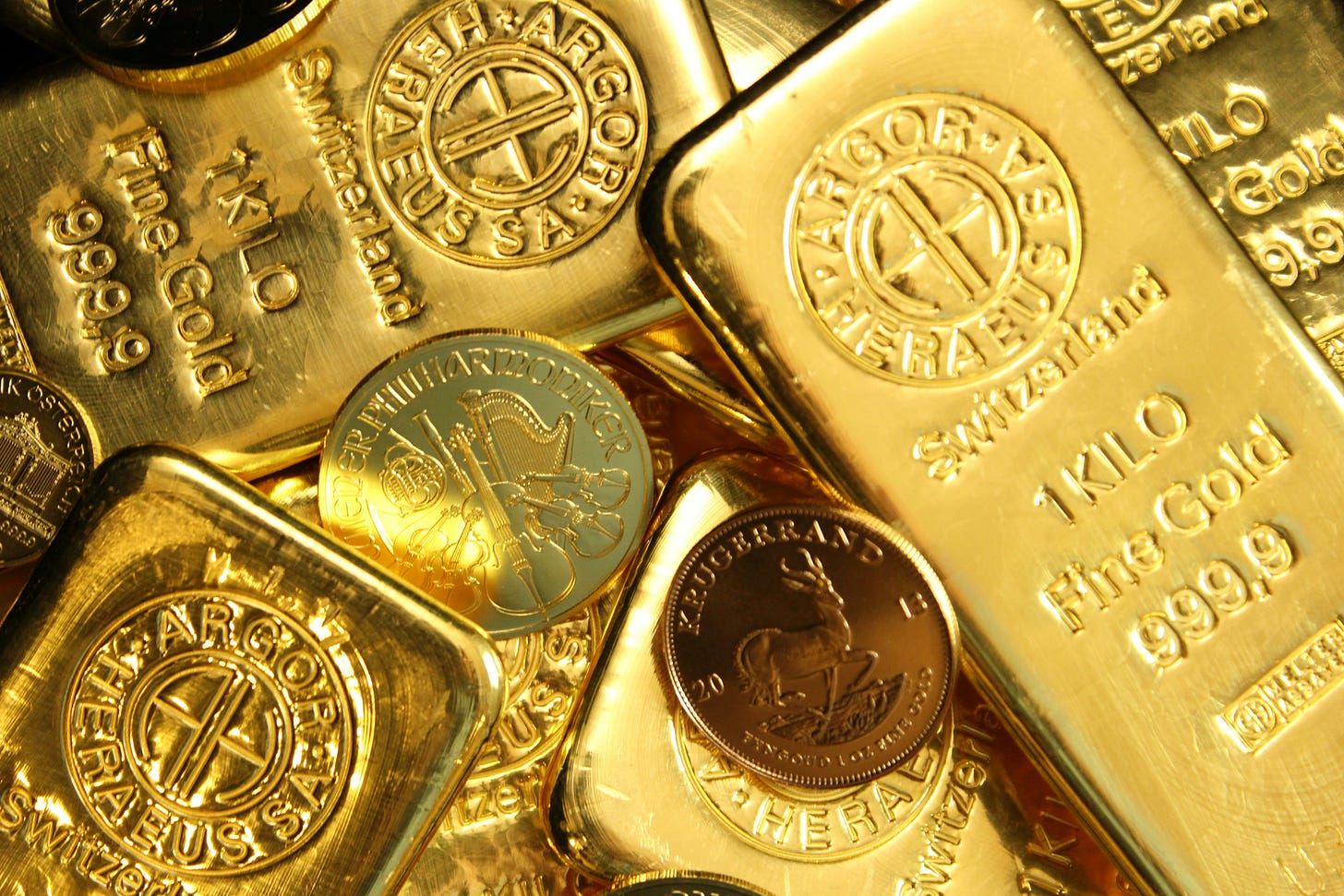Obscene luxury prices are just a sign of the times
The rich got richer, so of course Louis Vuitton got more expensive
Years ago in Paris, I was killing time between fashion week appointments and thought I’d check out the Cartier store on the Champs-Élysées. I had zero intention of spending money there, I just felt like having a look around. But the security guard wouldn’t let me in. The guy holding the door took one look at my outfit — a hoodie and a bomber jacket — and shook his head. Cartier didn’t like what I was wearing, so Cartier wouldn’t let me in.
I didn’t really mind. Even though I used to sit front row at all the big shows, I am absolutely not a luxury consumer. One of the great ironies of fashion in 2023 is that so many of the people who keep the wheels turning in the industry — the editors, buyers, PRs and the like — can’t afford the clothes they’re supposed to be wearing. That was true back in my Highsnobiety days, and it’s even truer now. Luxury fashion has always been expensive (duh) but these days it’s really expensive. Like, really stupid, taking-the-piss expensive.
The Row has always cost a lot, but Marie-Kate and Ashley want almost two grand for a cotton oxford shirt.
How about dropping over 13 grand on a trompe l’oeil Bottega Veneta leather sweatsuit (hoodie $6.8k, sweatpants $6.4k)?
$4,500 on a knitted Burberry beanie that looks like a duck sitting on your head?
$7,800 Louis Vuitton skis?
If you’d like to keep your spending below four figures, then Prada does a $925 basketball. It’s made of nylon, so it’s “part of the brand's genetic code”, according to the website.
Pharrell's $1m Louis Vuitton bag is another level of expensive. Called the Millionaire bag because it costs a million dollars (duh), it’s made of crocodile leather, with gold hardware and diamond pendants. It’s so special that ordinary people like you and me can’t even see it on the Louis Vuitton webstore — we only know what the product page looks like because NBA player PJ Tucker leaked a screenshot from Vuitton’s VIP portal on Instagram.
The New York Times reports that luxury prices are up by 25% since 2019, while Chanel has more than doubled its handbag prices since 2016. A few weeks ago, Phoebe Philo fans were shocked to see the price tags on the collection they’d been waiting years for — $3,000 for a necklace that says “MUM”, $8,500 for a large leather tote, $19,000 for a sequined dress.
And while the industry’s PR line is that higher prices are just a reflection of the increased cost of raw materials thanks to the pandemic, inflation and the war in Ukraine, that’s not the whole story. Business of Fashion describes rising luxury prices as “a bid to pad margins” — aka brands want to make more money. And they know they can, because rich people are richer now.
When the world economy was collapsing in 2020, central banks dumped mountains of cash into financial markets to keep them above water. That meant that even when covid was turning the world upside down, stock markets were booming. Rich people have a ton of money in stocks, so the pandemic made them even richer. At the other end of the spectrum, mass layoffs and inflation hit lower-income people the hardest.
Even the International Monetary Fund, one of the most pro-capitalism institutions on planet earth, admitted that the pandemic “created new inequalities and exacerbated preexisting income gaps”. That’s not to say that our obscene level of inequality is new — it’s been creeping up on us for decades. In 2007, the year before the Global Financial Crisis, Forbes calculated that there were 946 billionaires in the world. Now there’s 2,640.
Between wealth and poverty is what’s often called the “squeezed” middle — people who are trying to build a future for themselves in the midst of an insane housing market, precarious jobs and student debt. Middle-class professionals used to be a big part of the luxury market, treating themselves to a Burberry trench or a Chanel bag every now and then, but that’s a lot harder to do now. Clearly, the luxury overlords figured out they’d make more money selling $10k bags to the 1% than they would selling $1k bags to project managers and graphic designers.
Some fashion people can still make big purchases if they hustle — there’s a lot of underpaid workers in the industry, but if you resell PR gifts and know the right people for discounts, you can make it work. A friend in New York told me he managed to got his $5,000 Bottega leather jeans at wholesale price, and paid for them by selling a few pairs of rare sneakers. But generally speaking, many people working in and around to the luxury industry can’t afford to buy luxury clothes themselves.
It’s a really sad state of affairs, because there’s so many smart, talented people with great taste who love the work of people like Phoebe Philo and Miuccia Prada. And while mere mortals like you and me might be able to save up for an expensive bag or a pair of shoes every now and then, the real luxury customer is the one who sold a startup, made a killing on the stock market, works in oil, or just happens to have been born into a family so rich that people call it a dynasty.
The luxury conglomerates want to be in every part of these peoples’ lives. And because the global 1% has such an obscene amount of money, there’s opportunities to sell them anything, which is why we have Louis Vuitton ski goggles, Bottega Veneta dog collars and Dior skincare for babies.
Value is a pretty abstract concept in the luxury world — normally, brands figure out pricing by marking up how much a product costs to make, and then adjusting it up or down if needed. So if your jeans cost $30 to produce, you’d probably sell them for under $200. But the corporate luxury houses have mastered the art of selling ordinary things at extraordinary prices. How much do you think it really costs to make $400 Balenciaga baseball caps and $500 Givenchy tees? Back when Vetements was breaking the internet in 2018, I asked a production consultant how much their $1000 Titanic hoodie would have cost to manufacture, given the weight of the fabric (which you could find in the product description) and the fact that it was produced in Portugal. He guessed around $15.
On the surface, luxury houses are all about crazy runway shows, new trends and gorgeous flagships stores, but these days the business is all about feeding the ultra-rich’s insane hunger for status. And it’s a big business. Bernard Arnault is pretty much the king of the luxury industry, and he’s worth $182 billion — he’s so rich that Kanye West played at his son’s wedding. His arch-rival Francois-Henri Pinault (who owns Gucci, Balenciaga, etc. etc.) is worth $34 billion, while Alain and Gerard Wertheimer, who together own Chanel, are worth around $32.7 billion each.
I once met a personal shopper working for one of the big London department stores, whose main clients were the wives of Emirati oil tycoons. He was in Seoul for fashion week because he needed to find them something new, something you’d never find in the UK. It’s the same old story — from 19th century fabergé eggs to Louis Vuitton surfboards, we just love to use fancy objects to tell the world we’re better than everyone else (there’s a whole section on this in my book, btw). And that’s the real point of Pharrell’s millionaire bag — spending $1 million on something that nobody else can buy screams I’m richer than you.
Most of this luxury stuff is just really tacky nonsense, right? It just proves the age-old saying that money can’t buy taste. That’s not always true, though — Mathieu Blazy’s Bottega Veneta is great, and there’s a whole sub-set of directional designers like Rick Owens, Dries Van Noten and Junya Watanabe who make interesting clothes at a luxury price point. It’s a shame so many of the people who appreciate their work will never wear it. Clearly, there’s a hugely under-served market for interesting clothes at a good price point. Times are tough for the 99%, but people still want something nice to wear.
The point I make in my book is that fashion isn’t really about clothes, it’s more like a mirror — it’s about who we are. The obscene prices luxury houses charge is just a reflection of the obscene distribution of wealth in this world. So it’s hardly shocking that brands are making $1,100 leggings and $230 scented water, because what else are you going to do when make your money by selling rich people expensive things they don’t need?





Love this. What's sad about this luxury price war, is the need contemporary brands feel to increase prices too. If the luxury world increases prices by X%, it is natural for the smaller brands to raise their prices by Y%. Some of the best contemporary brands at the moment (Margaret Howell, OL, mfpen, AKOG, Beams Plus) have all become incrementally more expensive year after year. Are input costs rising? Of course. However, it feels that the luxury conglomerates control the prices for the companies further down the brand food chain. Does a rising luxury tide raise all other contemporary ships?
So glad to see you tackling what appears to be an increasingly taboo topic! The rise of luxury doesn't just reflect our unequal society, it's caused by it. Jason Hickel makes this point persuasively in his degrowth manifesto, and we also covered it (as well as some solutions) in our Eat the Rich on Earth Day essay! https://www.earlymajority.com/articles/eat-the-rich-on-earth-day